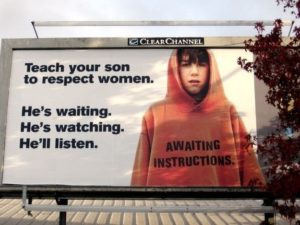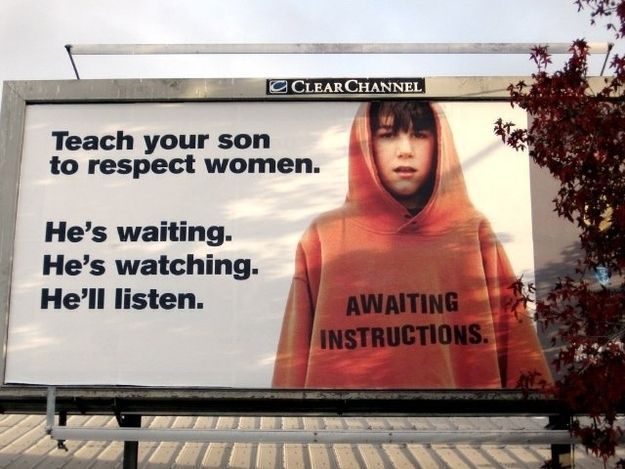In the past few weeks, the news has been full of reports about women who are reporting sexual harassment from men in positions of power and authority. The question I’m getting asked is whether there is something that can be done to make sure that young boys are taught that this behavior is unacceptable. There most certainly is, but the issue is complicated, and rooted in inherent communication differences between males and females.

From infancy, girls have a verbal advantage. Whether that advantage is based on a biological difference in brain development (as is thought by some) or based on more frequent interaction with adults (which others think more likely) doesn’t matter. Girls have better language skills, and that advantage goes with them until they are well out of primary and secondary school. Girls are also better at reading body language and understanding vocal nuances, giving females an advantage in many forms of communication, not just verbal.
Little boys, on the other hand, have better spatial and targeting skills, which stick with them through their school years, and beyond. Boys seem to learn best from manipulation of items in their environment, and they do not always respond well to verbal information. Over time, most women and men develop skills in both verbal and physical language, but women continue to depend on verbal skills and men on physical methods for communication.
The result is a major difference in communication style. In general, girls use their words focused on feelings, and are taught to be collaborative, cooperative, and agreeable. Boys are typically more direct and self-referenced, using their words to assert their social dominance and demonstrate status. As we grow older, we learn better methods, but these approaches lie beneath most of the communication breakdowns between the sexes.
Look at these two very different statements that are intended to send the same message.
She – “Would you like to go?”
He – “Let’s go!”
What she means is she wants to go, what he hears is an invitation he is free to turn down.
What he means is he wants to go, what she hears is a command that requires her to obey.
When the situation includes sexual behavior, both individuals are now guilty of misunderstanding each other, especially if the woman wasn’t expecting sex to be part of the message. He thinks he is being flirtatious, and she feels constrained or coerced, and if the man is in a position of power, she may not think she can turn him down. Combine that with our hyper-sexualized society, along with what men may have seen on the Internet or even premium cable channels, and many men have been led to believe that they have the right to touch others – women in particular – in ways that are inappropriate.
That’s how we got here. Now, how do we get out of this mess?
One part of the solution is to provide comprehensive sex and sexuality education to both boys and girls at every stage in school. Girls need to learn to be more direct in their speech and develop an internal locus of control. Many girls believe that their lives are controlled by others and this can result in a variety of issues including perfectionism, eating disorders, and victimization. By developing an understanding of how they can control their own lives and by practicing direct messaging techniques, girls will present less of a target for male predators.
When boys learn to respect girls and women as equals, and develop skills in self-control, they will be less likely to take advantage of anyone else including women. Additionally, limiting their access to pornography may reduce their assumptions about what behavior women are willing to engage in.
In response to a call to help all children learn to deal with sexual harassment, one source pointed out that many children are limited in their view about what appropriate behavior for their gender actually is. Schools can help by providing programs where students can develop a wider sense of appropriate behavior. My concern with these programs is that they often appear to want all children to respond in the same way, instead of understanding that boys and girls do not process information in the same way. The central feature of sexuality programs must be to provide good role models of healthy behavior, and to help all children learn to respect everyone regardless of their sexual expression.
This is a problem for everyone, and both boys and girls need to be taught to stand up for themselves and to value others.
Which brings me to the Big Question: how can you help your son grow up to treat women well?
- Make sure that those around him treat the women he knows, and his mother in particular, with respect.
- Make sure that those around him treat him with respect because you can’t respect others if you don’t know what that feels like.
- Model for your son ways to interact with others that will teach him how to treat others with respect for their value as human beings.
- Talk about sex and sexuality when the opportunity arises, as naturally as possible, and make sure that his school offers comprehensive sexuality education that includes discussions about effective communication and the emotions involved in relationships.
- Discuss pornography when appropriate, pointing out that the behavior he may see there rarely reflects reality. You should also use Internet filters to prevent your boy from accessing inappropriate sites.
- Give him the opportunity to interact physically with male peers, as roughhousing has been shown to help boys learn social skills.
